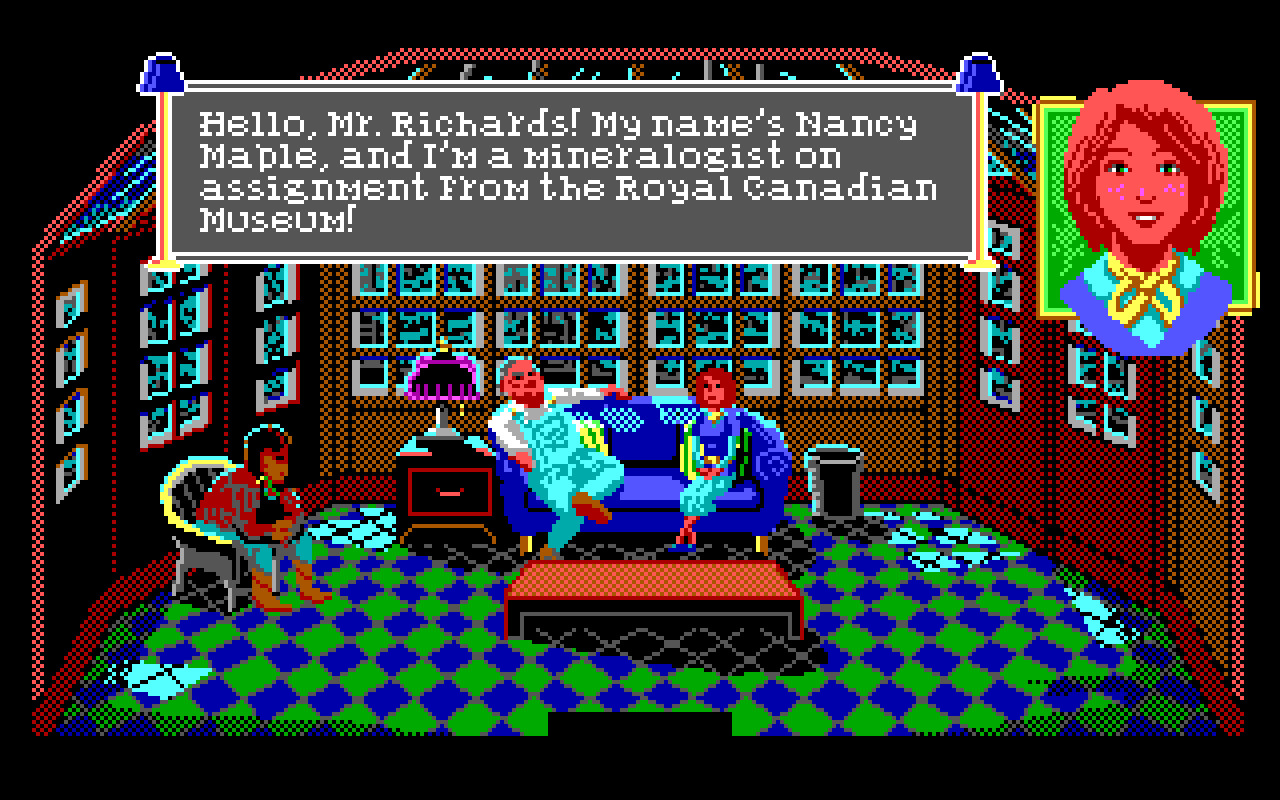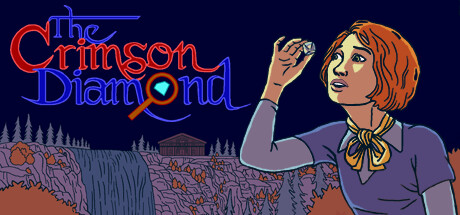Introduction
The Crimson Diamond, released August 15, 2024, is a retro‐style EGA text‐parser mystery adventure. You play as Nancy Maple—an amateur geologist turned detective—on a fact‐finding trip to the empty mining town of Crimson, Ontario. Developed by Julia Minamata, this cozy mystery captures the spirit of classic Sierra games like The Colonel’s Bequest and the Laura Bow series. In this overview, we’ll compare The Crimson Diamond to its inspirations and to modern narrative adventures by examining its plot, gameplay, visuals, sound, and fan response.
Storyline and Narrative Depth
Like an Agatha Christie locked‐room mystery, The Crimson Diamond takes place in and around Crimson Lodge. You read Nancy’s journal entries, eavesdrop on conversations, and question a varied cast—miners, prospectors, historians, and treasure seekers—all chasing the legendary gem.
-
Compared to The Colonel’s Bequest. Both are set in isolated mansions with oddball guests. The Crimson Diamond leans into your geology skills, adding a fun educational side.
-
Compared to Laura Bow. Nancy’s drive is personal (saving up for college), while Laura already works as a detective. This story moves at a relaxed, cozy pace instead of a timed race.
-
Compared to Return of the Obra Dinn. Obra Dinn’s split‐up timeline and complex puzzles are tougher. Crimson Diamond keeps things simpler, letting you enjoy small discoveries instead of high‐concept mechanics.
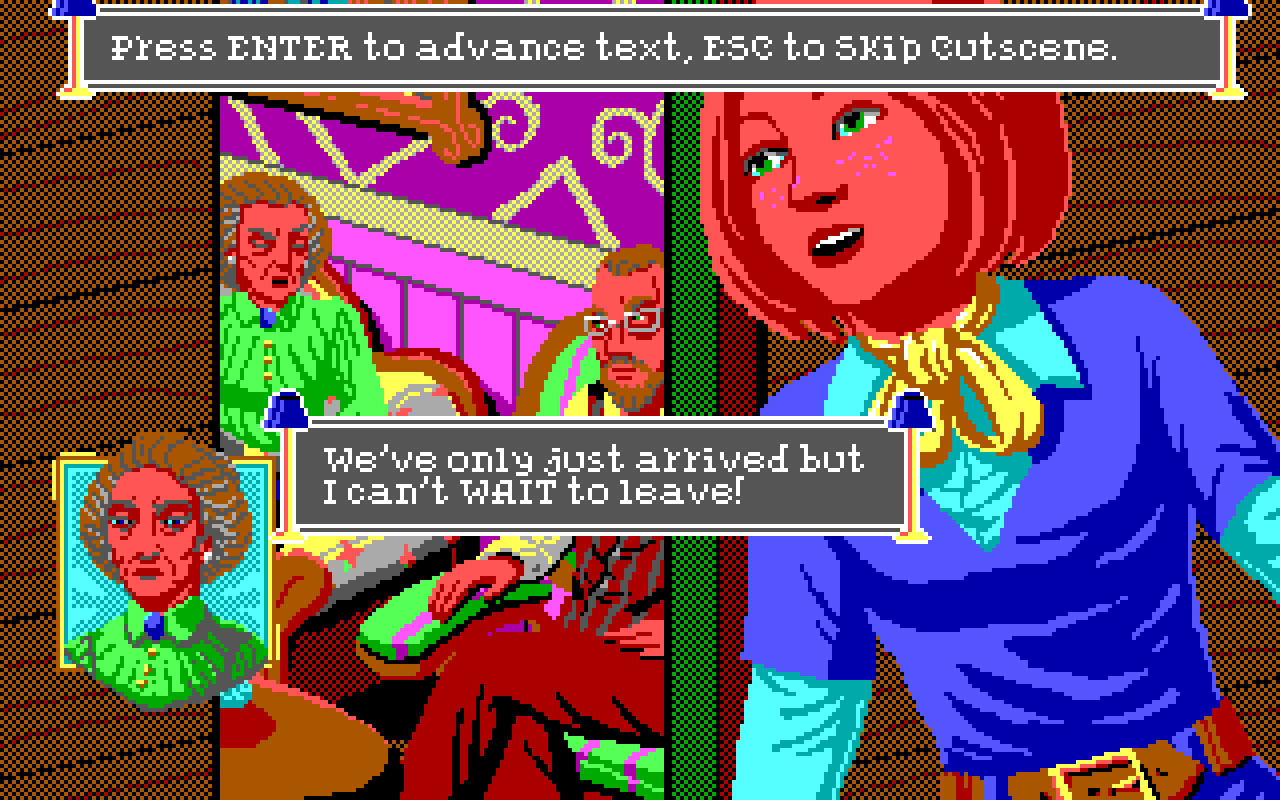
Gameplay Mechanics and Parser Interface
At its core, The Crimson Diamond is a classic text parser: type “EXAMINE LAMP,” “ASK MINER ABOUT DIAMOND,” or “WRITE NOTE: MUDDY TRACKS LEAD EAST.” Exploration is freeform—you may wander the forest, revisit rooms, or eavesdrop on conversations at will.
- Puzzle design. Focuses on observation and deduction; no inventory hot-spot pixel hunts. You’re rewarded for reading logs, maps, and NPC dialogues.
- Save system. Permits multiple slots but lacks autosave—a nod to retro traditions that modern players may find unforgiving.
- Quality of life. “HELP” offers a verb list; “LOOK” reminders keep you from wandering blind. Compared to Sierra’s parser in the early ’90s, it’s slightly more forgiving but still demands precise input.
Visuals and Audio
Rendered in authentic 16-color EGA palette, crimson-tinted woods, creaky lodge interiors, and grainy portraits evoke nostalgia. While minimalistic by modern standards, the pixel art conveys mood through shadow and silhouette.
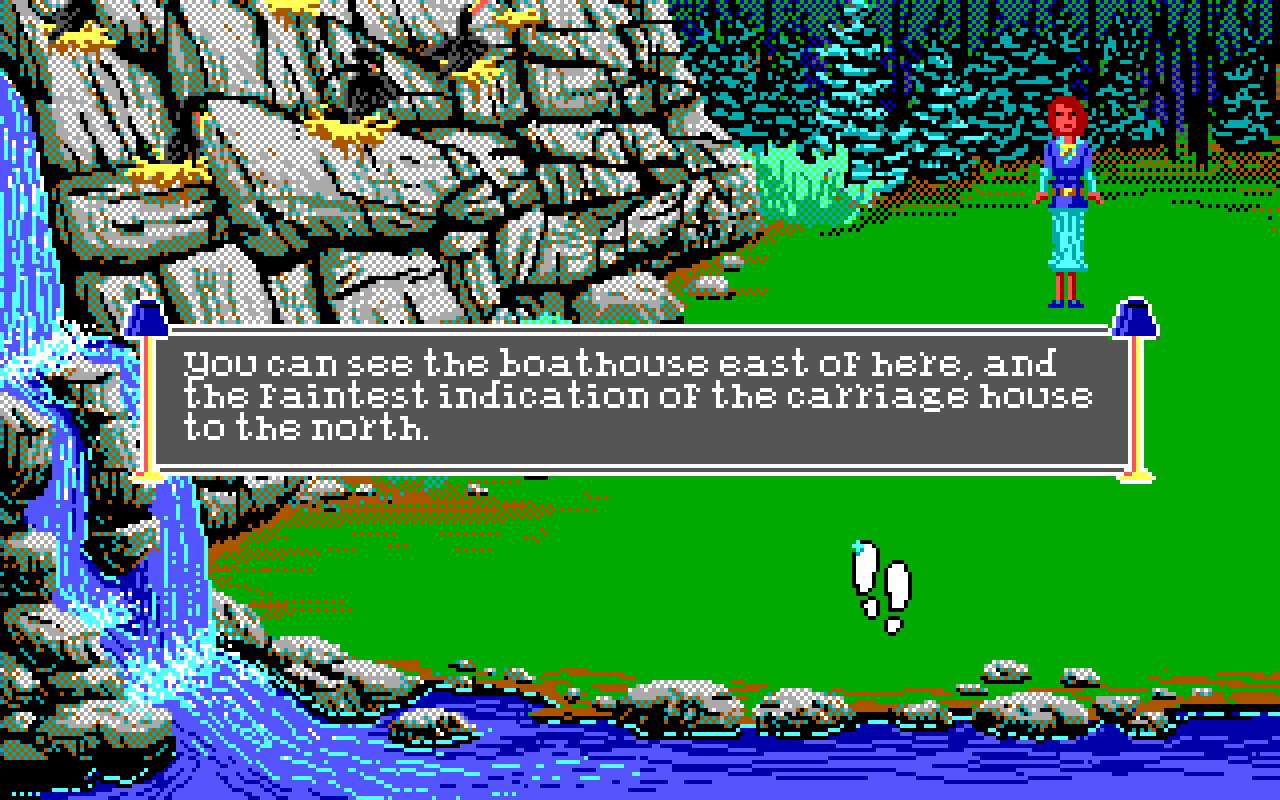
The ambient soundtrack—wind in pines, distant drips of water, a melancholy piano motif—complements the visuals. Unlike orchestral scores of AAA epics, this minimal score enhances immersion, akin to chalk-and-blackboard mystery audio design.
Community Reception and Review Analysis
On Steam, The Crimson Diamond holds an 81% “Very Positive” rating from 11 recent reviews and an impressive 97% “Overwhelmingly Positive” across 514 all-time reviews. Common praise highlights:
- “Nostalgic parser fun without frustrating dead-ends.”
- “Strong character writing and cozy atmosphere.”
- “Perfect bite-sized mystery—six to eight hours of gameplay.”
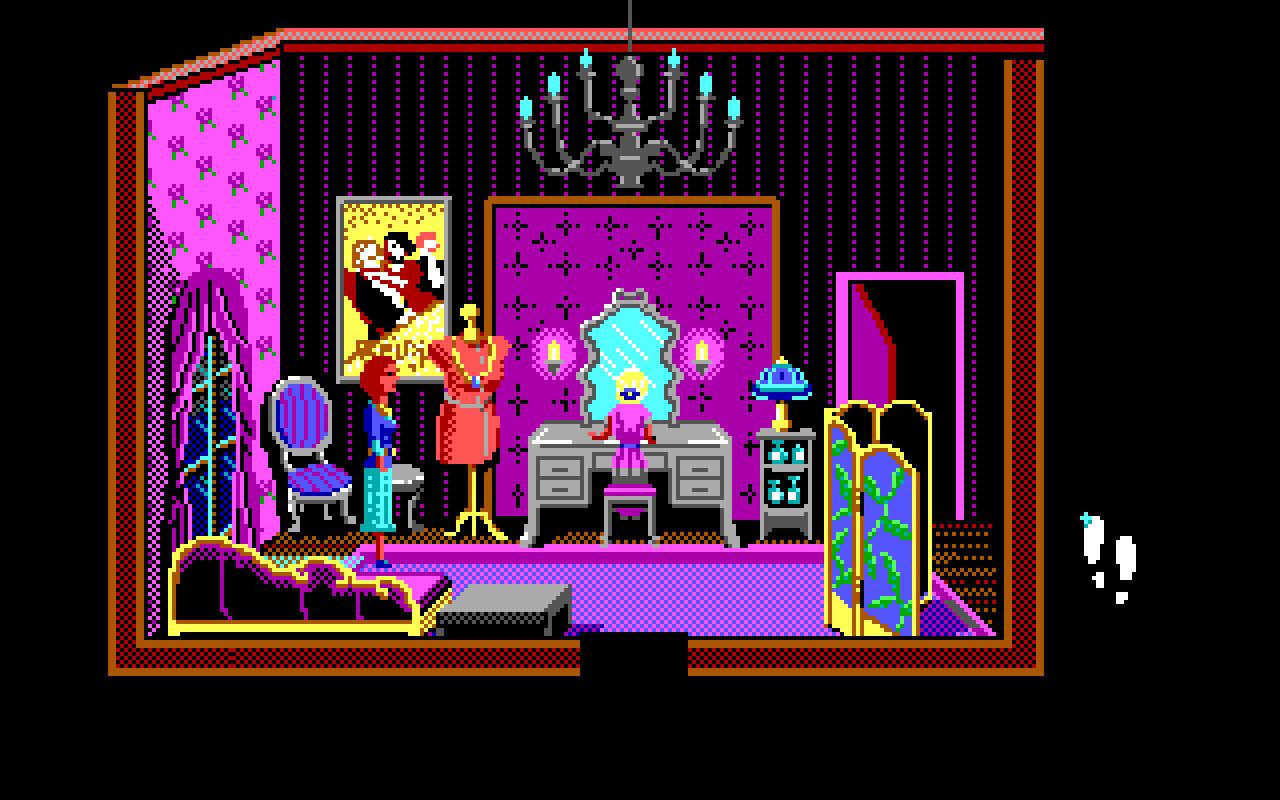
Criticisms center on:
- Pacing can feel slow if you explore too much.
- The parser sometimes misses common synonyms.
- No voice acting—text-only presentation may put some players off.
Overall, players generally agree that Minamata finds a good mix of old-school style and easy-to-learn gameplay, earning praise for its smooth puzzles and cozy world design.
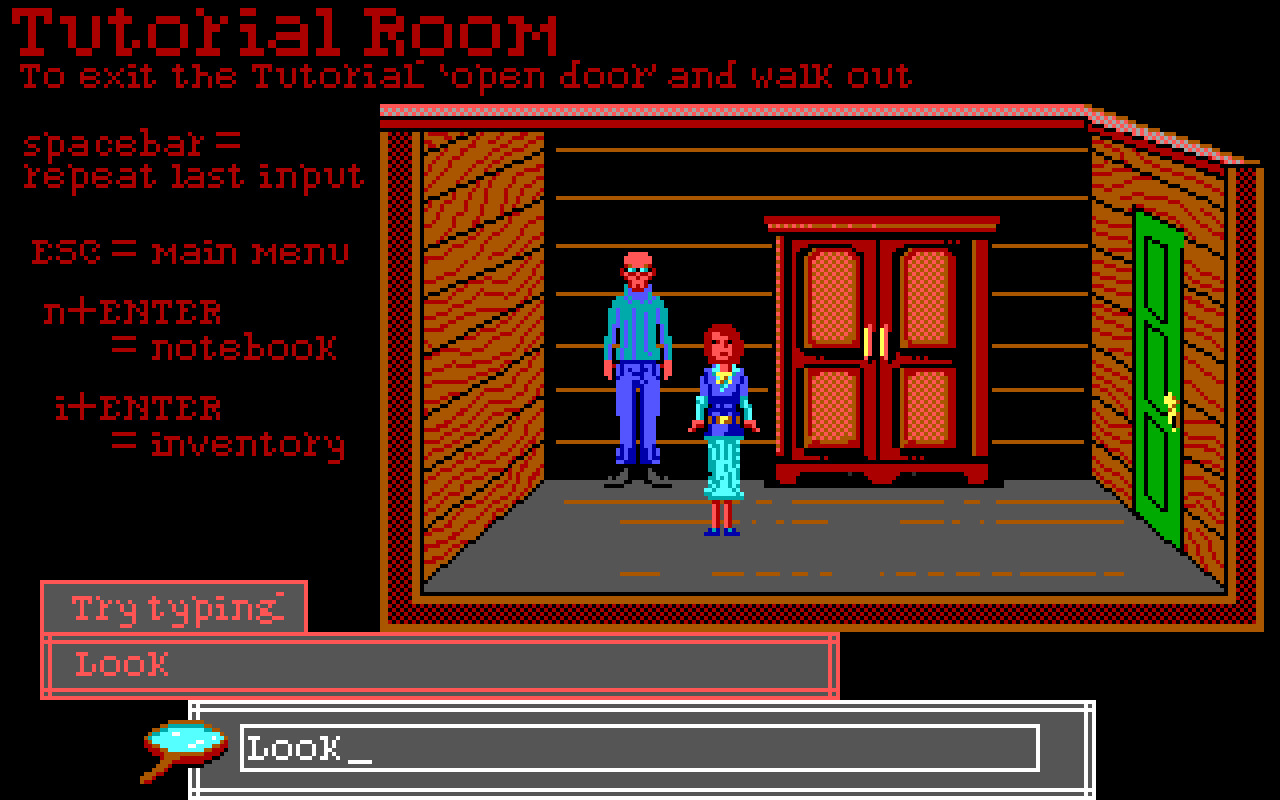
Comparisons to Similar Titles
- The Colonel’s Bequest (1991)
- A groundbreaking text-based murder mystery by Roberta Williams. The Crimson Diamond updates the interface but keeps that same step-by-step investigation feel.
- Similarly, The Dagger of Amon Ra (1992)
- This mix of historical drama and a strong heroine finds its counterpart in Crimson Diamond, which narrows its focus to one setting but rewards deeper character moments rather than just treasure hunting.
- Meanwhile, Danganronpa: Trigger Happy Havoc (2010)
- A fast-paced courtroom battle of wits, Danganronpa trades high drama for quick-fire debates. By contrast, Crimson Diamond swaps those dramatic trials for quiet detective work in a small, cozy world.
- On the other hand, Return of the Obra Dinn (2018)
- Tough puzzles meet bold black-and-white graphics. Both titles demand careful thought, but Obra Dinn’s non-linear storytelling feels more intense compared to Crimson Diamond’s relaxed pace.
Strengths and Weaknesses
- Strengths: Engaging writing, evocative pixel art, intuitive parser help, strong replay value with multiple endings.
- Weaknesses: Lack of voice or ambient dialogue, occasional parser frustrations, slower pacing for action-oriented players.
Conclusion
The Crimson Diamond honors old-school mystery games, blending classic parser play with a modern, user-friendly design. If you love finding every dialogue choice, side clue, and hidden corner, this game delivers. It may not match big-budget epics in scope, but it outshines many indie titles in character detail and mood. Fans of Laura Bow, The Colonel’s Bequest, or anyone curious about text parsers today will find Nancy Maple’s northern journey well worth exploring.
